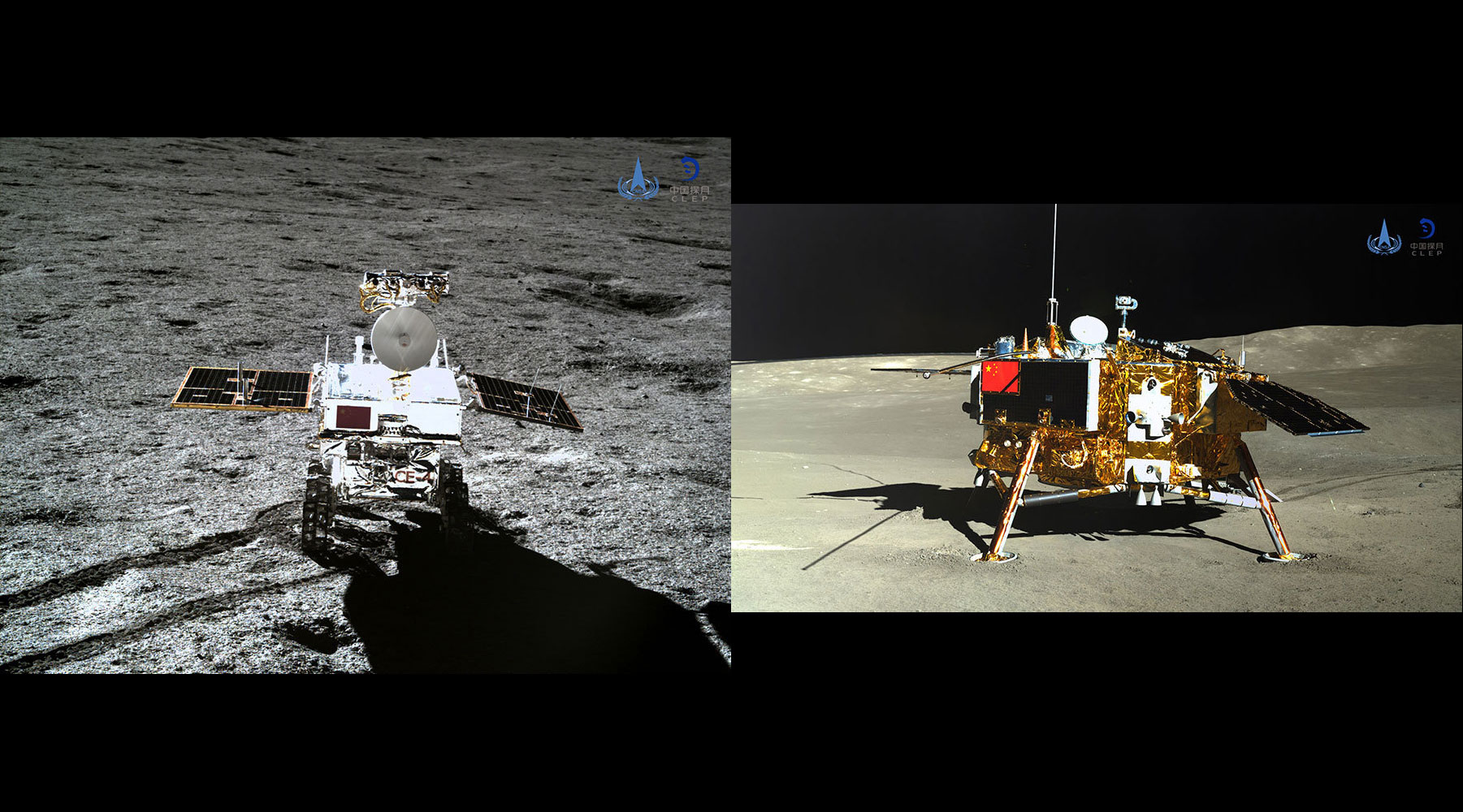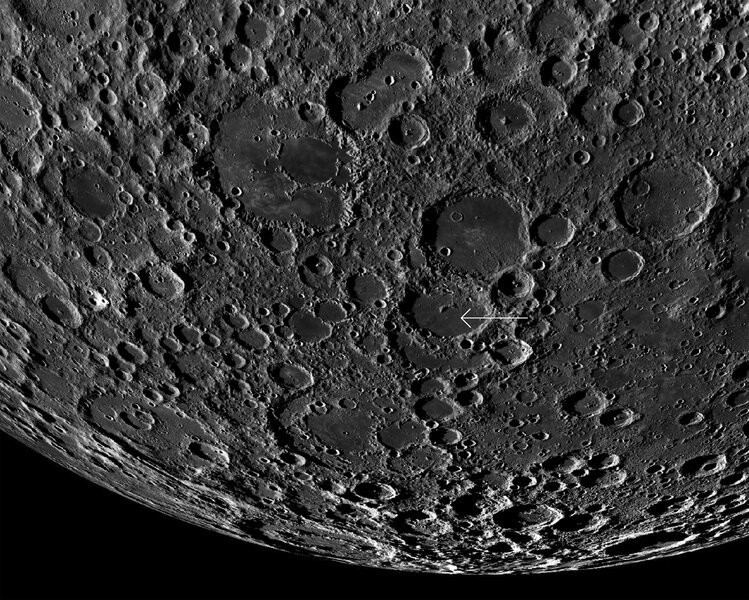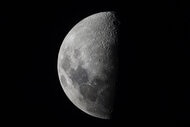Create a free profile to get unlimited access to exclusive videos, sweepstakes, and more!
Amazing video: Chinese lander and rover descend to the Moon’s far side!

On January 3, 2019, the Chinese National Space Administration spacecraft Chang’e 4 soft-landed on the Moon. Even cooler: This historic mission is the first ever to land on the Moon’s far side, the hemisphere forever invisible from Earth.
The spacecraft touched down in the 180-kilometer wide von Kármán crater, a huge impact feature very close to being exactly in the middle of the lunar far side (it’s at 177° East longitude, where 180° is the exact opposite point of Earth, and at a latitude of about 45° South). The crater is so big and deep that the impact event carved a hole to the bottom of the lunar crust, and may have exposed material from the Moon’s now-solid mantle. The Chang’e 4 mission’s main goal is to examine the chemical and geological nature of the area, so that we can learn more about the Moon’s formation and interior.
I’ll explain in a moment, but I have to show you this phenomenal video taken by the lander as it descended toward and landed on the Moon’s surface. It’s incredible.
The video is sped up several times, and you can see the platform moving a bit as the lander adjusts its approach angle and attitude. What’s fascinating about the view is that it’s nearly impossible at first to tell by eye just how high up it is! Are those craters big, and the lander still high above the surface, or are they small and seen from low altitude?
As it descends, smaller and smaller craters resolve themselves, looking pretty much just like their big siblings, so the distance above the surface is indeterminate. It’s not until about the 2:10 mark, where the thrusters start blowing dust around, that you suddenly realize it’s mere meters above the landing spot and the craters you see are tiny indeed, just centimeters across.
It reminds me of when the Apollo 16 astronauts spotted a big boulder on the Moon, nicknamed House Rock, and started walking toward it. It was actually much bigger than they thought, and much farther away; they thought it was a few meters across at first, but it’s actually 12 meters tall and as much as 20 meters across! In an article I wrote about it many years ago, I mentioned that the reason they couldn’t judge its size well is that a lack of air on the Moon makes distance harder to judge; something far away on Earth fades a bit due to haze, but on the Moon something kilometers away looks just as sharp. Not long after I posted it, I got an email from Charlie Duke — the Lunar Module Pilot for Apollo 16!! — who said it was also due to the lack of scale; small rocks and big ones looked just the same. A boulder the size of a couch looked just like one the size of a house, fooling them into thinking the House Rock was closer than it was.
The same is true for the descent video; the craters all look pretty much the same at different sizes. When the dust starts to blow around it’s a bit of a shock.
Once it was on the Moon, the lander didn’t waste any time deploying the rover, called Yutu-2, either:
That was processed by Emily Lakdawalla of The Planetary Society. The footage there looks a little red (as do the images from the lander) because the images weren’t color-balanced — as David Rothery (also of The Planetary Society) explains. A later video showing the rover moving looks more realistically colored:
For scale, the rover is about 1.5 meters long, and 1x1 meter wide and high. It has a mass of 140 kg, so it weighs about 51 pounds on the Moon. The lander and rover together have a mass of 1,200 kg (440 pounds on the Moon).
The mission is the second one in Phase 2 of the CNSA’s lunar exploration project. The first phase was to orbit (done by Chang’e and Chang’e 2), the second to land and deploy a rover (Chang’e 3 and 4), and the third is to return samples of the Moon back to Earth (Chang’e 5 and 6, timing TBD).
This landing on the far side is pretty interesting. The Moon’s rotation rate is the same as its orbital rate, so it always shows the same face to us. Don’t call it the “dark side”! Pretty much every part of the Moon gets day and night cycles, so the far side goes through phases just like the near side that we see. However, since the far side is hidden from Earth, it wasn’t seen until the Soviets launched an orbiter in the 1950s. We have excellent maps of it now, thanks to missions like the Lunar Reconnaissance Orbiter, which include von Kármán crater, allowing scientists to know just where the lander touched down.
Still, there is a difference between the hemispheres: The lunar crust is much thicker on the far side than on the near. There are hypotheses on why this happened, but we don’t know for sure. Maybe Chang’e 4 will help us figure that out.
Also, since Chang’e 4 is on the far side, it can’t communicate directly with Earth! CNSA put a replay satellite in orbit around the Moon, positioned in a spot where it will always stay above the far side — called the Earth/Moon L2 point — and can transmit data back from the lander and rover.
The chemical and geological analysis is only one part of the science they’ll do. There’s a radio wave detector to investigate the solar influence on the lunar ionosphere (ionized material over the Moon), a neutron dosimeter to measure the radiation dose (in preparation for humans to visit), ground-penetrating radar, and a neutral atom detector to look at how the solar wind interacts with the lunar surface.
There’s also a mini-biological ecosystem on board! Investigating long-term sustainable habitats on the Moon, it will look at how silkworm larvae interact with potato and tomato plants; they are all in a steel cylinder 18x16 cm in size.
I’m looking forward to more images from the lander and rover, though the Chinese have been a little close to the chest with info and specifics of the mission. Hopefully they’ll release more as time goes on.
One last note: The von Kármán crater is named after Theodore von Kármán, an aerospace engineer and physicist who was also the Ph.D. advisor to Qian Xuesen, the founder of the Chinese space program. I can’t be sure that’s why that landing site was chosen, but it’s fitting.
If you want more info and to keep up to date with the mission, I suggest following Emily Lakdawalla on Twitter, and keeping up with the Planetary Society blogs.
















